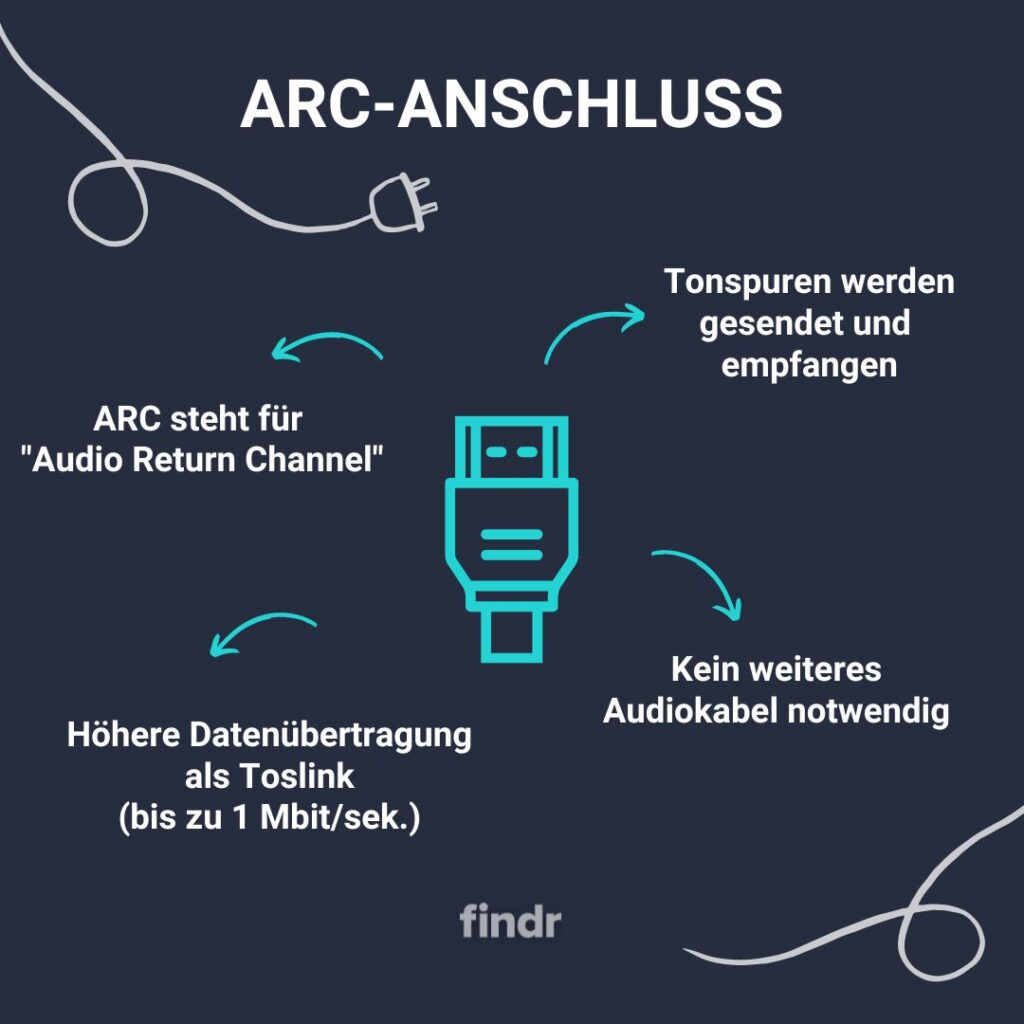ARC (Audio Return Channel)
The abbreviation ARC is short for Audio Return Channel. In contrast to the Toslink connection, this interface offers a higher data transfer rate of up to 1 Mbit per second. An additional advantage here is that audio tracks can be received and sent via one cable. This makes an additional connection redundant.
ARC as a HDMI feature
Within the HDMI standard, the ARC function has been supported since version 1.4 and can now be seen in almost all commonly available TV sets. Often, this channel is part of the first or second HDMI port and is marked by a corresponding label of the abbreviation in brackets. Today, TVs with two ARC-capable ports are significantly rarer.
Benefit & limitation
The main purpose is to be able to transport the sound signal directly out of the TV without an additional connection such as an optical S/DIF digital cable to a soundbar or AV receiver. It does not matter where the source is coming from.
The transmission can therefore take place via a receiver, a console or other TV speakers. You do not need a specific cable solution for this, so one or two simple HDMI cables are sufficient.
Caution: However, if only one of the devices has ARC compatibility, the transfer will not work. Due to the bandwidth, no uncompressed data stream can be transmitted. By now, many TVs are equipped with the improved eARC functionality, which offers you additional benefits.
- Audio
- Codecs
- Companies
- Features
- Ports
- Technical Terms
- Connectivity
- Misc
- Smart-Features
- Video
- Image Errors
- Image Formats
- Image Function
- Ports
- Technical Terms
- 4K
- 4K@120 Hertz
- Aspect ratio
- Backlight
- Banding
- Bit
- Black level
- Brightness
- Calibration
- Candela
- Color resolution
- Color space
- Color space coverage
- Color temperature
- Color volume
- Contrast
- Curved
- Filmmaker
- Flat
- Full HD
- Gamma
- Gamut
- HD Ready
- Home theater
- Image format
- Image synchronization
- Input Lag
- ISF
- Luminance
- Motion Handling
- Native resolution
- Netflix Calibrated
- Pixel
- Pixel density
- QFT
- QHD
- Raytracing
- Rec.2020
- Refresh rate
- Resolution
- Response Time
- Smart-TV
- UHD
- UHD-2
- VR
- White balance
- WQHD
- TV Tech


